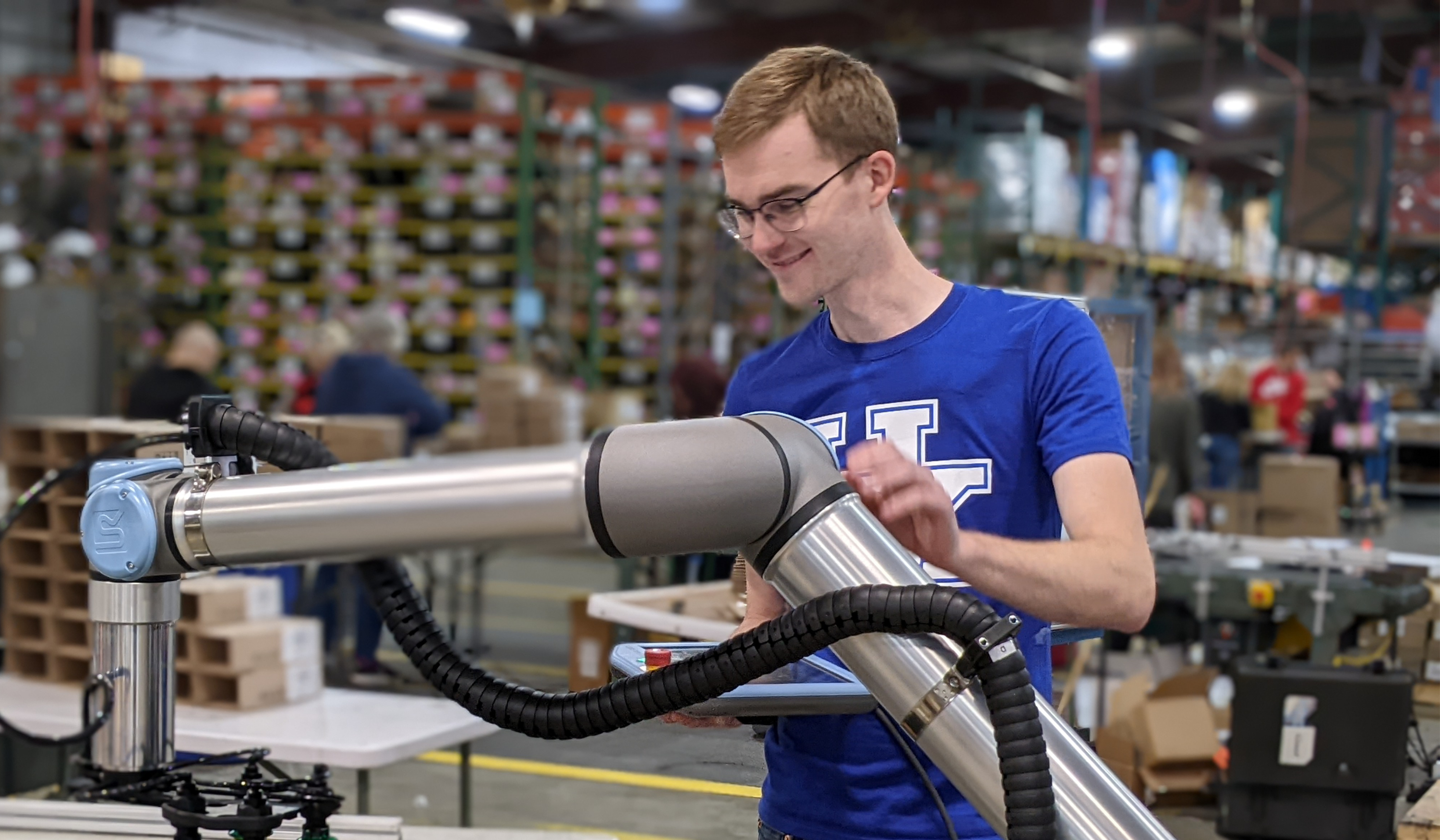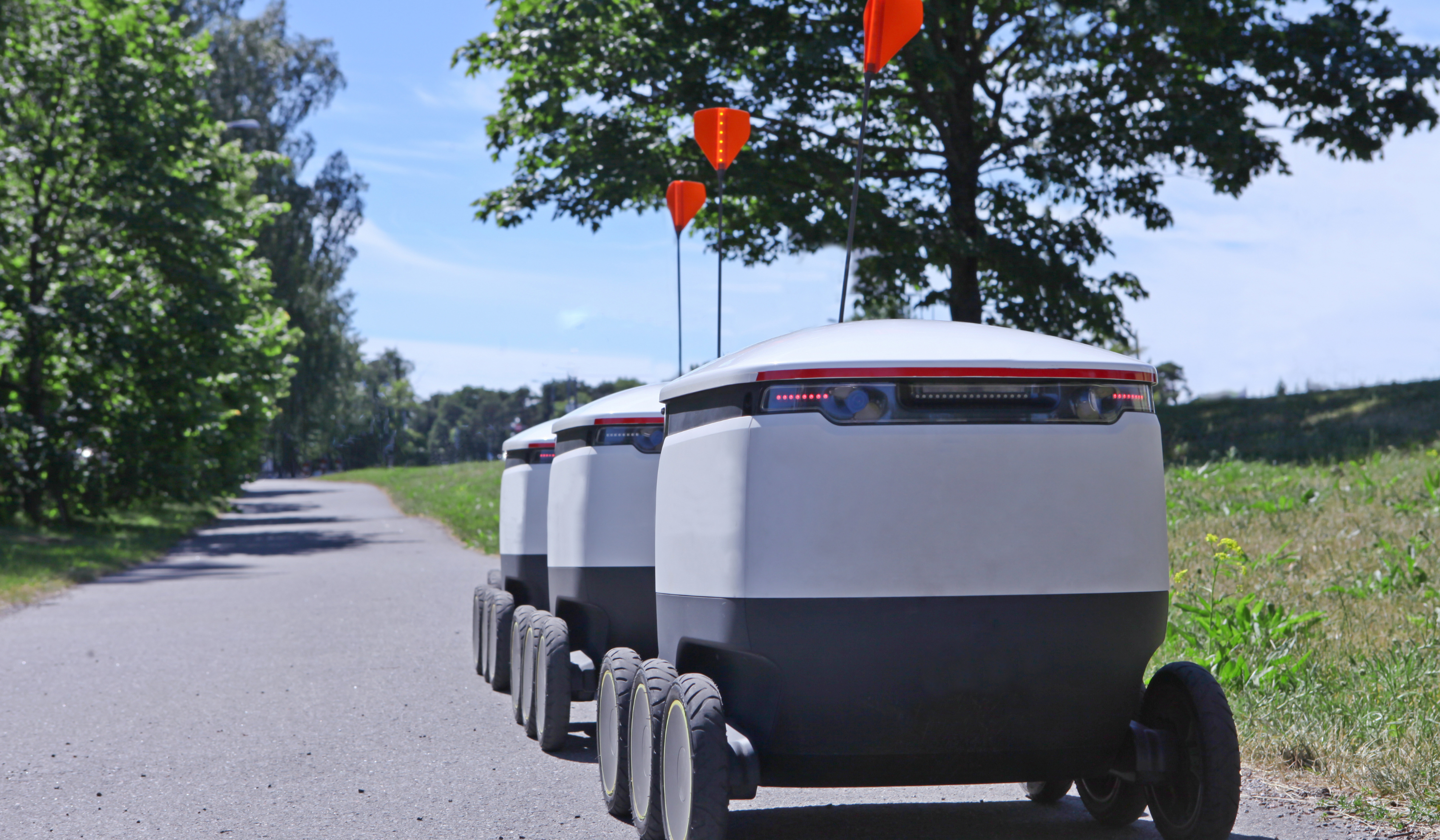What's New in Robotics this Week - Oct 14

Posted on Oct 14, 2016 7:00 AM. 9 min read time
Disney's one-legged hopping bot; S Korea's huge robotics investment; launch of Women in Robotics; NASA's Valkyrie humanoid; Mady Delvaux; an autonomous robo-garden... and much more. Find out what's happening in our robotics universe this week. We hope that the news we have selected will interest and amuse you. Enjoy!
Disney Researchers Build First Tetherless Hopping Robot (EurekAlert!)
Roboticists at Disney Research have created the world's first one-legged, hopping robot that can operate without a tether. The 5-pound, one foot tall, battery-powered bot could open up new uses for a class of robots that are often used to study balance.
Disney's robot can maintain its balance for approximately seven seconds (around 19 hops), but the researchers anticipate an increase in on-board computing power could keep it upright far longer.
"To achieve the high-speed, high-force actuation necessary to make the robot hop using electrical power, the researchers designed a linear elastic actuator in parallel, or LEAP, to serve as the leg. The LEAP uses a voice coil actuator - a highly efficient actuator that operates the same way as a loudspeaker driver - paired with two compression springs," the company said in a press release.
"This leg is connected to a torso that contains battery power, sensors and other electronics. To keep this upper torso level during hopping, the angle of the leg is adjusted at each hop using two standard servo motors. The torso is only about twice as heavy as the leg, whereas most hoppers have torsos that are much heavier in relation to the leg, which helps them achieve dynamic balance."
One-legged robots are not new. A series of MIT Hoppers were developed from as early as 1980. However, the fact that Disney's robots can operate without being tethered to a power supply offers new research opportunities, including (I hope), the development of robotic pogo sticks.
South Korea to Invest 500 bln Won to Foster Robot Industry in Coming 5 yrs (Yonhap News)
South Korea's trade ministry has announced an ambitious 5 year public-private partnership to invest 500bn won (USD439m) in the country's robotics industry, it was announced this week.
Yonhap News reports that the investment will invest the bulk of these funds in R&D "to localize a few key fundamental technologies." The rest will be used to fund "corporate R&D centers to launch up-to-date robots by 2020" and in the training of robot experts and researchers.
"The government will support the industry to improve further by integrating artificial intelligence technologies and providing various solutions and services," said Trade Minister Joo.
The South Korean government has focused on the potential of robot technology as a new growth engine. The global robot market expanded to $16.7 billion in 2014 from $9.6 billion in 2010. South Korea has a global market share of 4.7 percent in 2014, ranking fifth following China, the United States, Germany and Japan. |
Launching the Women in Robotics network (Robohub)
A new international community representing women in robotics launched this week. The "Women In Robotics" network was created to encourage local networks, create a global communication platform and to improve the visibility of women in robotics.
The group's leaders include include Andra Keay in Silicon Valley, Sabine Hauert in Bristol, Sue Keayin Brisbane, Hallie Siegel in Toronto, and Kassie Perlongo in Warwick.
If you're interested in joining, request an invitation here. The group also has a Facebook.
Meanwhile, Robohub announced its annual "25 Women in robotics you need to know about – 2016" this week, and there's an amazing amount of talent on the list, from experts in micro robotics and artificial intelligence to political leaders with an interest in robotics policy.
All of us at Robotiq wish the new Women in Robotics group great success!
Nasa's Valkyrie Robot as You've Never Seen it Before (Wired)
Originally designed for use in disaster scenarios, NASA's Valkyrie humanoid robot has now began to be tested to see whether it could assist future space exploration by performing tasks on celestial bodies that are too dangerous for humans.
Wired reports that "Valkyrie - with its three fingers and thumb - is being developed to mine resources, build habitats autonomously on the surface of Mars, complete disaster-relief manoeuvres and work alongside astronauts."
Valkyrie’s specs are impressive; the bot is fitted with a perceptual sensor built by Carnegie Robotics Multisense SL. It bears "hazard cameras" in its torso, and each upper arm features four series elastic rotary actuators, and, when combined with its forearm, has seven joints in total.
Elsewhere, the robot has 44 degrees of body freedom, weighs 300lbs, is 6ft 2in tall and runs on two Intel Core i7. It is now being developed at various universities around the world to allow collision-free movement.
The Robot Economy (Part 3): Interview with MEP Mady Delvaux (eu robotics)
If you've been reading our weekly roundup regularly, you'll remember the name Mady Delvaux. Delvaux is a Member of the European Parliament and she has been leading European policymaker's efforts to develop a regulatory and legal framework for emerging cyborg and robotics technologies.
In a must read interview, Delvaux sat down with eu robotics to talk about the robotics issues that European policy makers are discussing.
An excerpt: "We asked the European Commission to put up a register that defines categories for robots and keeps track of them, what they do, and where they are. We already do this with cars for example. On ethics, we suggested the creation of Research Ethics Committees (in universities to think of the ethical aspects of the work they are doing. In the health sector, prosthetics and implants, raise questions around the enhancement of human capabilities. There is also a question about equality, who has access to robot technology, who will pay for it, and how can knowledge be evenly distributed?"
Check out a draft paper on these topics prepared by Delvaux and colleagues here. (To access the document, after downloading the file change the file extension from ."do" to ".pdf.")
Autonomous Robotic Garden Drives Itself Around the City in Search of Sun (inhabitat)
Researchers at University College London’s (UCL) Interactive Architecture Lab have created a self-driving garden with autonomous cultivating capabilities. The device, dubbed "Hortum machina, B" and powered by a solar panel, is enclosed in a geodesic sphere, comes with an in-built water storage system and can roll gently around urban landscapes in search of optimum levels of sunlight.
"The mobile ecosystem uses a network of electrodes to monitor the garden’s physiological responses to the environment," reports Inhabitat. "Then, using this data, propels the sphere into motion. For example, if the plants at the bottom of the sphere lack direct light, the individual panels begin to shift until those plants are sufficiently lit. The robotic core can also move the sphere to a new location if the garden requires shade or if air pollution levels are unhealthy."
How Robot Trucks Will Work: Army Roboticist (Breaking Defense)
An interview with the U.S. Army’s chief roboticist, Bob Sadowski, about some of the challenges facing autonomous vehicle developers.
Before I sign off for this week, make sure to check out this Cobot Webcast hosted by the always insightful Tom Green, Editor-In-Chief of Robotics Business Review.
And Finally...
Welcome your new robot overlords: humans (c|net)
A Pocket Guide to the Robot Revolution (The Atlantic)
3 Robots That Are Designed to Save Human Lives (Tech.co)
Without new anti-robot laws, humanity is doomed, MPs told (The Register)
Japanese Robotics Giant Gives Its Arms Some Brains (MIT Technology Review)
Japan is testing robots as caregivers and companions. Could that work in the U.S.? (News Observer)
Heathrow Airport: Police investigate sightings of 'dangerous' drones near approach (Evening Standard)
Japanese robot cat Doraemon raises hackles in India and Pakistan (The Guardian)
Seabubbles aspires to bring us the water taxi of the future (Popular Science)
We Flew DJI’s Incredible New Foldable Drone (TIME)
Industrial robots will replace manufacturing jobs — and that’s a good thing (Techcrunch)
Google cancels plans to sell robotic arms (Financial Review)
("What's New In Robotics This Week" is compiled from Wed-Wed every week and published on Fridays.)








Leave a comment